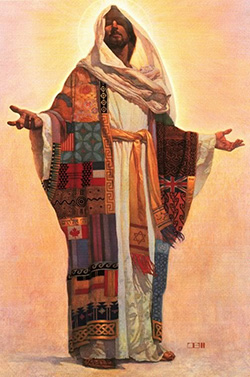![]()
The Nature of Jesus
Emanuel Swedenborg asserts that Jesus Christ Himself was a manifestation of God, the Divine made flesh to enable humanity to be aware of a unique relationship with God. Prior to His Coming, God had been incomprehensible to humans beyond the capacity of our perception and understanding. Through the birth of Christ, humanity was given an overt expression of God’s reality in human terms. Christ is not seen as a separate entity, but as reflective of the multiple consciousness that is the oneness of God. There are not three divine beings comprising the trinity, but one Divine Nature in which the three aspects of God are present. Nor did Christ come to redeem us from original sin. Rather, His mission was that of revealing the nature and reality of the spiritual life, and to provide a living example of it.
………………..
………………..
………………..
For more information about Emanuel Swedenborg and his prolific, pioneering, multi-faceted life and work, including his remarkable spiritual experiences, go here.
………………..
Related Books, Links, Resources
 Since the dawn of Christianity, there has been debate about the true nature of Jesus Christ. Was he a divinely inspired person or the incarnation of God on earth?
Since the dawn of Christianity, there has been debate about the true nature of Jesus Christ. Was he a divinely inspired person or the incarnation of God on earth?
In his short work The Lord, Swedenborg presents an answer to the time-honored question of how Jesus and God are related: he argues that they became in every way one and the same. Throughout his works Swedenborg uses the term “Lord” to refer to Jesus as the embodiment of God. In this work he emphasizes that the traditional trinity of Father, Son, and Holy Spirit should be thought of not as three separate divine Persons that have always coexisted but as three aspects now present within one divine Person — Jesus in his resurrection.
The Lord also touches upon key themes in Swedenborg’s theology: the spiritual reasons why the Lord came to earth; the significance of the death and resurrection of his human form; and the ways in which his coming was foretold in the Old Testament. Throughout the book, Swedenborg provides extensive biblical references to support his arguments. He concludes with a brief chapter describing the New Jerusalem, a reference to both the city described in the book of Revelation and the new spiritual age that is now unfolding.








